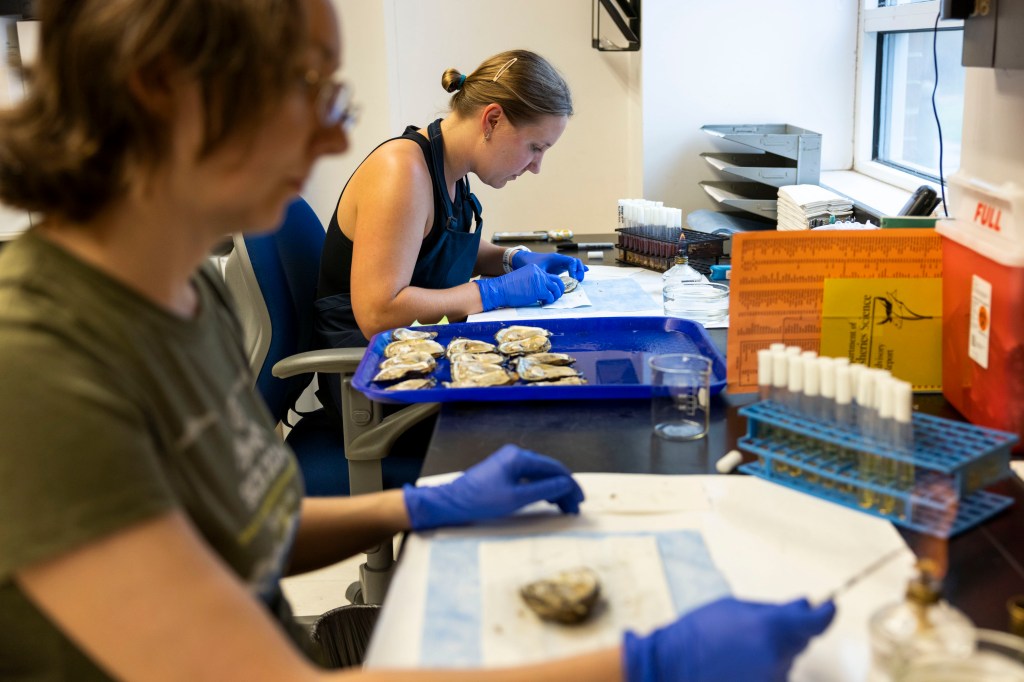At a time when our region needs all the data it can get about a changing climate and changes we can make to protect our communities, William & Mary has launched a “Year of the Environment” initiative to “celebrate its estuarine campus and renew its commitments to healthy ecosystems and the communities that depend on them,” according to the school.
The effort puts a spotlight on the ongoing and ambitious efforts by the school to prepare the next generation of environmental leaders, to learn more about how to build sustainable ecosystems and to develop effective strategies for conservation and thoughtful stewardship.
All of that promises to be transformational for Hampton Roads and for a college that continues to apply its academic heft toward protecting and preserving the coastal Virginia landscape.
Only a few months ago, William & Mary announced a record donation that will improve the trajectory of marine science education, not only in Virginia but potentially nationwide. The school received $100 million in August from philanthropist Jane Batten to expand the renamed Batten School of Coastal & Marine Sciences. (Batten is the widow of Frank Batten Sr., the founder of Landmark Communications and former publisher of The Virginian-Pilot.)
Batten’s generosity is long-established, and her determination to use her wealth to improve higher education has benefited colleges and universities throughout the region. But even with that impressive record, her gift to William & Mary and the Virginia Institute of Marine Science was eye-popping and the largest donation in the college’s 332-year history.
The school said that the money would be used to dramatically expand the academic programs and research conducted at VIMS, the campus in Gloucester that has been at the center of aquaculture research and coastal preservation efforts for more than 80 years. VIMS has expanded our understanding of marine ecosystems, such as those in the Chesapeake Bay, and students pursuing graduate degrees in marine sciences work there as part of their study.
From there, graduates have advanced to careers in coastal resilience, fisheries and oyster management and conservation in both the public and private sectors. These young people are the environmental leaders of tomorrow, learning vital skills and conducting groundbreaking research here in Hampton Roads.
Now Batten’s donation has been complemented by a $50 million gift from Dr. R. Todd Stravitz and the Brunckhorst Foundations. Stravitz has also amassed an impressive record of philanthropy in higher education and was responsible for a $104 million donation to Virginia Commonwealth University in 2022.
William & Mary said in February that the money would be used to fund scholarships in coastal and marine sciences, making it the largest scholarship donation in school history. Importantly, it will reduce the cost barrier for students looking to pursue degrees and careers in these fields — study they will do here in coastal Virginia.
All of this coincides well with the college’s “Year of the Environment” initiative, announced in January. The effort will look inward at ways William & Mary and VIMS can be responsible stewards of the environment as well as outward as those institutions seek to bring their research and academic talents to bear on the problems facing our region and other coastal areas.
“Our communities, our economies, national security, transportation, energy, food supply, all hinge on our ability to create science for solutions,” William & Mary President Katherine A. Rowe said at the school’s Charter Day commemoration in January. “To find the path to resilience.”
It’s impossible to ignore that William & Mary launched this undertaking at a time when the federal government is pulling back from its obligations to address climate change and during a period when Virginia needs to do all it can to protect coastal communities from the impacts of rising seas, warmer oceans and a hotter planet.
The work being done in Williamsburg and Gloucester will be critical as Hampton Roads looks to the future, and the region is fortunate to have educators and students, as well as philanthropists, eager to lead the way.
Originally Published:



